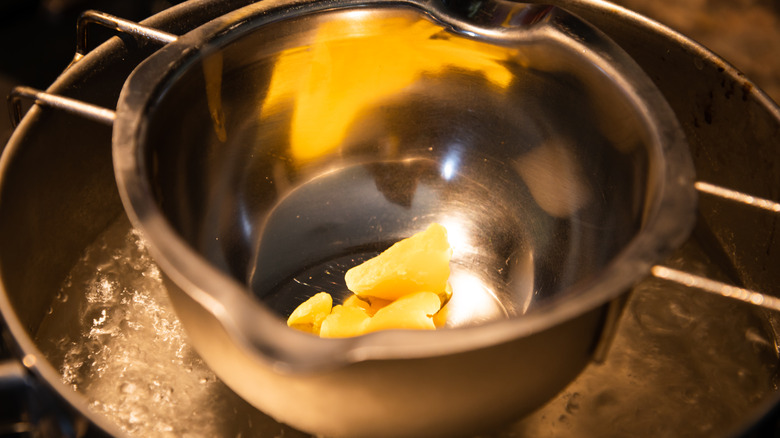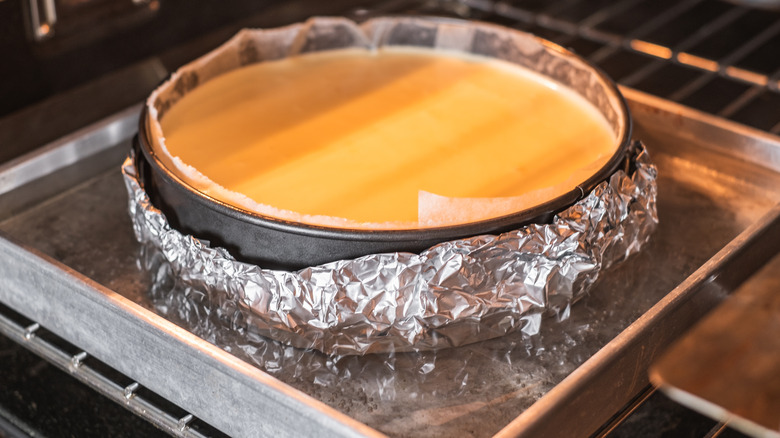Is There A Difference Between A Bain-Marie And A Double Boiler?
Bain-marie versus the double boiler reads more like a promotion for a pro-wrestling match than a topic on a food site. But the term bain-marie continues to intrigue with its touch of mystery, perhaps because of its alchemical origins. A double boiler, on the other hand, brings up images of the dive-bar cocktail, the boiler maker, or perhaps custodial work.
As Wasserstrom explains, a bain-marie is a hot water bath where one larger container is filled with heated water, while another smaller container is placed inside of it. The water from the larger container gently heats whatever is inside the smaller container, which sounds a lot like a double boiler.
Per Bon Appétit, you can fashion your own double boiler with pretty much anything you can heat safely. As with the bain-marie, the only requirement is one dish must sit inside the other — be it a bowl and a pan, two pans, or ramekins and a baking dish.
If you've ever used either of these methods to make a custard or melt some chocolate, you know they're very similar. But are they the same?
It all boils down to the name
Let us consider the evidence. A bain-marie is used to slowly and uniformly heat foods, per HowStuffWorks. The same is true of a double boiler. Both create a water bath at a controlled temperature.
A water bath creates indirect heat, keeping temperamental dishes like hollandaise sauce and crème brûlée from breaking. It's the same process whether performed in a fancy-sounding bain-marie or a double boiler. There is no difference in the apparatus, except for what we decide to call them.
Bain-marie is simply the French term for a double boiler setup. But, we might be more inclined to call it a bain-marie when we temper the chocolate for our flourless chocolate cake versus melting paraffin to seal our canning jars (in a double boiler).
Either way, using the water bath method will help you make silky custards and sauces or gently reheat and maintain a consistent temperature for delicate dishes.

